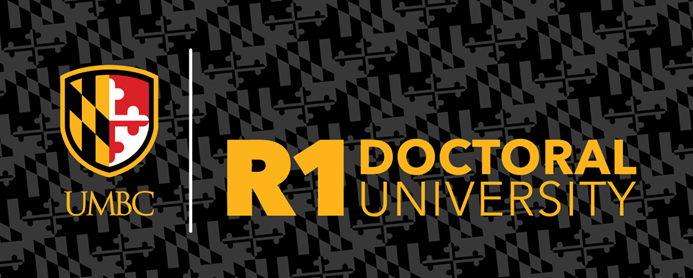UMBC is designated as a Carnegie ‘R1’ Institution since 2022
In February 2022, UMBC was designated a Doctoral University with Very High Research Activity – also known as Carnegie R1 – according to the 2021 Carnegie Classification of Institutions of Higher Education. That designation was reconfirmed in the most recent 2024/2025 R1 Classification, placing UMBC among the top 187 research universities in the Nation – representing the top 5% of U.S. institutions.
Today, UMBC is one of four R1 institutions in the State of Maryland – joining Johns Hopkins University (JHU), the University of Maryland, College Park, and the University of Maryland, Baltimore.
This classification is an outcome of long-term strategic priorities and investments in the research and creative achievement community at UMBC – people, facilities, and programs. The R1 designation reflects the work of our entire campus community, including colleagues in engineering, natural sciences, social sciences, arts, and humanities
Carnegie reviews its Research classifications on a three-year cycle, and for 2024/25 the criteria to obtain an R1 designation were considerable simplified such that for an R1 Classification an institutions would need to:
- Expend at least $50 million in total R&D per year as reported to the NSF HERD Survey; and
- Award at least 70 research/scholarship doctorates per year, as reported to IPEDS.
In FY 2020 – the reporting period relevant for the 2021/22 classifications – UMBC reported $83.9M in Research & Development expenditures to the NSF HERD Survey, and conferred 87 doctoral degrees as reported to IPEDS.
In FY 2023 – the reporting period relevant for the 2024/25 classifications – UMBC reported $144.3 M in Research & Development expenditures to the NSF HERD Survey, and conferred 100 doctoral degrees as reported to IPEDS, clearly exceeding the R1 designation criteria for 2025.
